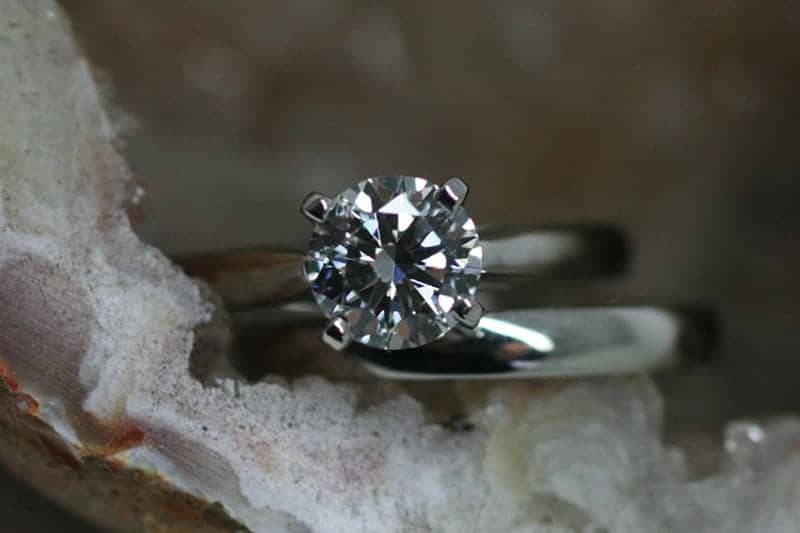In the realm of fine adornments, the discussion among moissanite vs diamond — especially man-made diamonds — is one that continues to enthrall those seeking the ideal pearl. The two choices offer exceptional characteristics, and understanding the subtleties between them can essentially influence your choice. This article dives profoundly into the distinctions among moissanite and man-made diamonds, offering a far reaching guide that expects to assist you with making an informed decision.
The Origins of Moissanite and Man-Made Diamonds
What is Moissanite?
Moissanite is an uncommon, normally occurring mineral found by the French scientific expert Henri Moissan in 1893. Originally confused with a diamond, moissanite was subsequently distinguished as silicon carbide, a material that has extraordinary splendor and fire. However, the moissanite available today is lab-created, as normal moissanite is exceedingly intriguing. Lab-created moissanite is engineered to convey a gemstone that intently impersonates the presence of a diamond yet with a one of a kind shimmer that distinguishes it.
Understanding Man-Made Diamonds
Man-made diamonds, otherwise called lab-developed or engineered diamonds, are created using progressed innovative cycles that reproduce the circumstances under which regular diamonds structure within the Earth. These diamonds are synthetically, truly, and optically indistinguishable from normal diamonds. The two essential strategies used to make man-made diamonds are High Strain, High Temperature (HPHT) and Substance Fume Affidavit (CVD), the two of which yield diamonds of surprising quality.
Physical and Optical Attributes
Splendor and Fire
One of the most basic parts of any gemstone is its splendor — how much light that enters and leaves the stone. Moissanite is eminent for its outstanding splendor, which outperforms that of a diamond. The stone’s refractive index is higher than that of a diamond, resulting in more light scattering, which adds to its trademark rainbow-like glimmers.
Interestingly, man-made diamonds have a brightness that is indistinguishable from normal diamonds. They display the exemplary white shimmer that diamonds are known for, without the rainbow-hued streaks seen in moissanite. This conventional splendor is frequently liked by those seeking the immortal polish related with diamonds.
Solidness and Hardness
With regards to solidness, diamonds are unrivaled. With a Mohs hardness rating of 10, diamonds are the hardest known normal material, making them exceptionally impervious to scratches and scraped spots. Man-made diamonds share this hardness, making them similarly tough and appropriate for everyday wear.
Moissanite, then again, is somewhat less hard, with a Mohs rating of 9.25. While it is still incredibly solid and reasonable for regular use, it is more inclined to scratching than a diamond. However, moissanite is tougher than diamonds, meaning it is more impervious to breaking or chipping.
Variety and Clearness
Variety is another critical factor while comparing these two gemstones. Man-made diamonds are available in a large number of varieties, from dull to fancy shaded assortments. The shade of a diamond is evaluated on a scale from D (dry) to Z (light tone), with boring diamonds being the most pursued. Man-made diamonds can be delivered to match these levels unequivocally, offering customers an expansive range of choices.
Moissanite, while for the most part appearing dull, can show a slight yellow or grayish tint under certain lighting conditions, particularly in bigger stones. However, more up to date ages of moissanite, known as close dismal moissanite, have been engineered to lessen these tints, intently mimicking the presence of a drab diamond.
Regarding lucidity, both moissanite and man-made diamonds can be delivered with minimal inclusions or flaws. However, diamonds are normally reviewed for lucidity, though moissanite isn’t, as its clearness is by and large high and reliable.
Cost Contemplations
Cost of Moissanite versus Man-Made Diamonds
One of the main distinctions among moissanite and man-made diamonds lies in their expense. Moissanite is considerably more reasonable than man-made diamonds, frequently costing a small part of the cost of an identical diamond. This reasonableness makes moissanite an alluring choice for the individuals who need the vibe of a diamond without the more exorbitant cost tag.
Man-made diamonds, while more affordable than regular diamonds, are even more expensive than moissanite. The cost of a man-made diamond is influenced by the very factors that influence regular diamonds — carat weight, variety, lucidity, and cut — yet they offer a more spending plan cordial choice for the people who need a genuine diamond.
Natural and Moral Contemplations
Sustainability of Moissanite
Moissanite is considered an eco-accommodating gemstone since it is created in a lab, requiring no mining, which fundamentally diminishes its natural effect. The creation cycle for moissanite consumes less assets and emanates less carbon contrasted with diamond mining, making it a sustainable decision for naturally cognizant customers.
Moral Creation of Man-Made Diamonds
Man-made diamonds are likewise touted as a more moral and sustainable option in contrast to regular diamonds. Since they are filled in controlled conditions, there are no worries about the moral issues related with diamond mining, like clash diamonds. Besides, the carbon footprint of producing man made diamonds is lower than that of mining regular diamonds, however it is as yet higher than that of moissanite creation.
Conclusion: Making the Ideal Decision
Choosing among moissanite and man-made diamonds eventually relies upon your needs. In the event that splendor and moderateness are your main worries, moissanite is a magnificent decision, offering a novel shimmer and extensive savings. However, on the off chance that you want the immortal charm of a genuine diamond with the additional advantages of moral and ecological obligation, then, at that point, a man-made diamond is the best choice.

